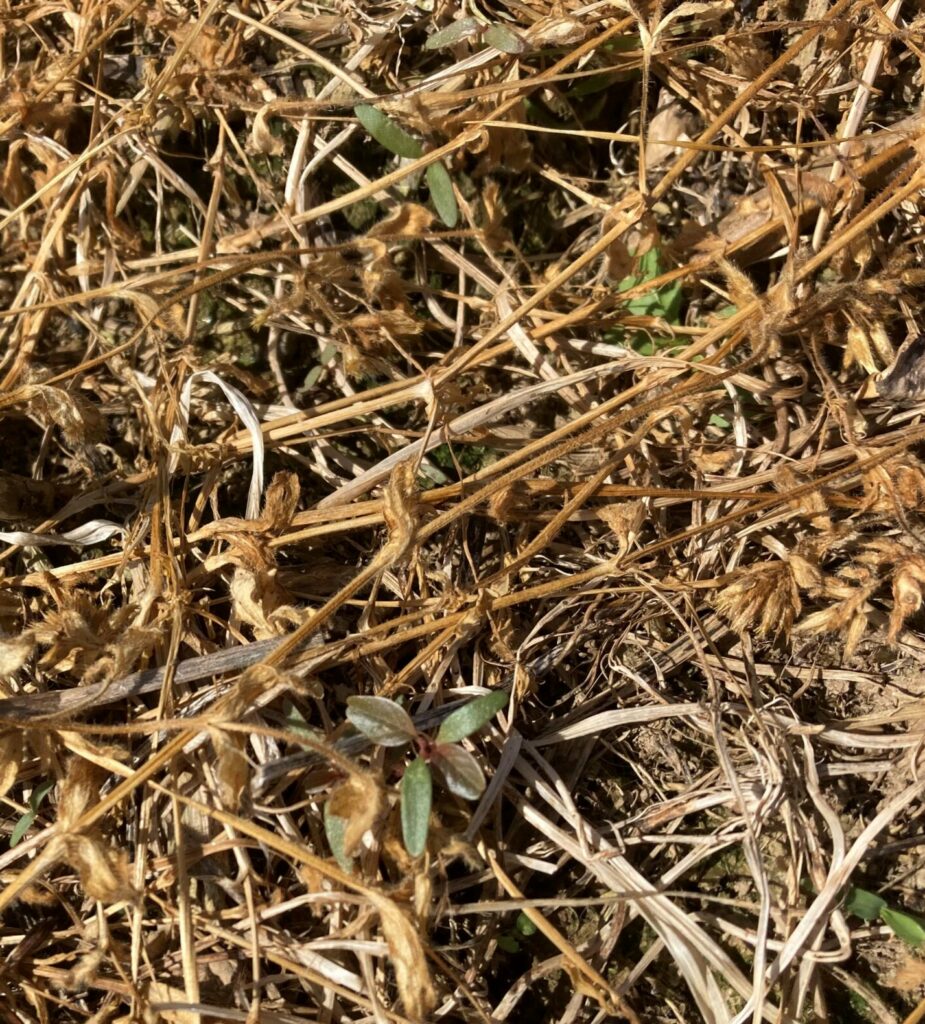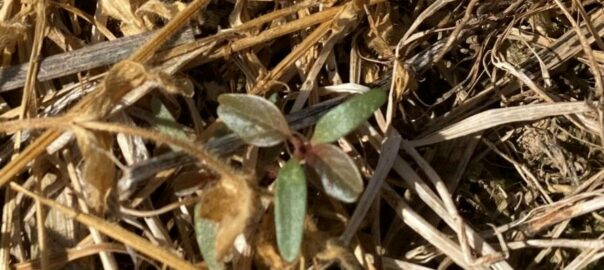
Palmer amaranth has begun to emerge and unfortunately it is not a problem to find seedling Palmer in our fields. This is not a surprise as research from two decades back suggests that environmental conditions like those we experienced the first half of April should be conducive for germination to begin.
Published literature on environmental factors that promote Palmer amaranth germination would point to relatively warmer soil temperatures (>40º F), swings in soil temperatures, and seed exposure to light as some of the most influential conditions for the seed to germinate.
Data from research have shown that 8% of Palmer amaranth seed will germinate with a minimum average soil temperature of 41º F. This is compared with 86% of Palmer amaranth seed germinating if the average soil temperature is 86º F. This is why Palmer amaranth emergence really gets rolling in May and June compared to April. Moreover, Palmer amaranth germination will increase another 11% if the soil temperature is alternating about 30% plus/minus that average soil temperature compared with seed laying in a more constant soil temperature. Palmer amaranth seed is also more prone to germinate when exposed to light.
If we consider that our no-till environment exposes most all the Palmer amaranth seed in the field to conditions listed above that enhance germination it is no wonder we struggle with this weed every year. Moreover, more recent research has suggested that glyphosate-resistant Palmer amaranth uses nitrogen more efficiently than Palmer amaranth that is not resistant to this herbicide. All of this would suggest that Palmer amaranth continues to evolve to increasingly improve its fit into our row crop production systems both from a herbicide-resistant standpoint as well as our cultural management practices in cotton and soybean.
Literature cited:
Bravo W, Leon RG, Ferrell JA, Mulvaney MJ, Wood CW (2018) Evolutionary adaptation of Palmer amaranth (Amaranthus palmeri) to nitrogen fertilization and crop rotation history affect morphology and nutrient-use efficiency. Weed Sci. 66:180-189
Gallagher RS, and Cardina J (1998) Phytochrome-mediated Amaranthus germination I: effect of seed burial and germination temperature. Weed Sci. 46:48–52
Gallagher, RS and Cardina J (1998) Phytochrome-mediated Amaranthus germination II: development of very low fluence sensitivity. Weed Sci. 46:53–58
Steckel LS, Sprague CL, Stoller EW, Wax LM (2004) Temperature effects on germination of nine Amaranthus species. Weed Sci 52:217-221


